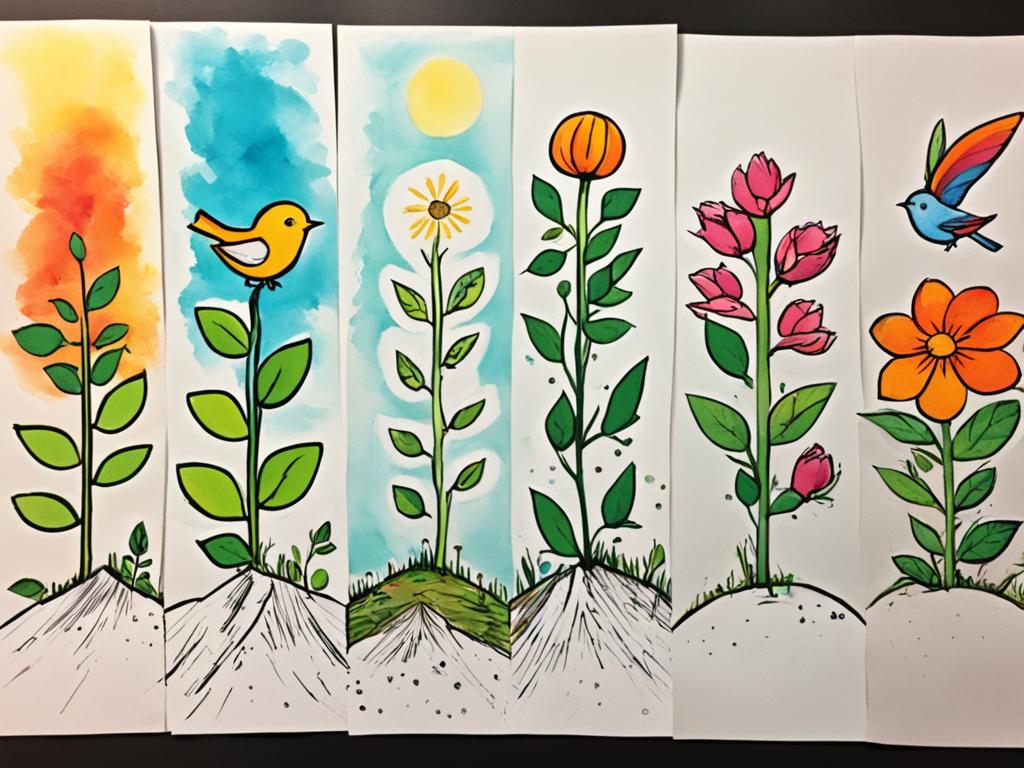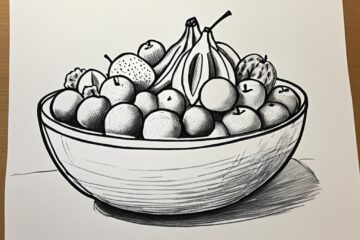Ready to tell amazing short stories? It’s a craft that shows the best of your ideas. It lets you dive into fantasy and create stories that pull people in. Our tips are for everyone, from new writers to pros. They’ll make your stories more vivid and real.
What makes a great story stand out?
Is it the way characters come to life? Or maybe it’s the mystery and excitement in the writing that draws readers in?
Let’s explore the secrets of writing fiction. We’ll find ways to turn your stories into something unforgettable.
This guide will cover all parts of storytelling. We’ll talk about plots, the heart of every story. We’ll also explore how to weave tales with strong, real characters, good and bad. And we will see how figurative language can make your writing shine.
And there’s even more to come!
We’ll help you handle times when words don’t seem to come. We’ll offer ways to get inspired using creative prompts. Plus, we’ll talk about why joining workshops can improve your writing. They’re places to get advice from peers and those who know the craft well.
Ready to make your short stories unforgettable?
Then let’s get started and bring your tales to life!
Understanding the Art of Storytelling
Before you start writing short stories, let’s understand storytelling. It’s not just telling stories. It’s about making readers feel, think, and remember. To do this, use different ways to tell a story and plan the story’s progress well. Your goal is to hook your audience right from the start.

Plot development is a crucial storytelling tool. The plot is like a story’s skeleton; it gives your tale form and meaning. It’s made up of events, any problems, and how they get solved. Telling a story well means crafting a plot that keeps people wanting more.
“A good plot is like a thread that weaves together the various elements of your story, creating a cohesive and satisfying narrative.” – Jane Smith, bestselling author
Think about the classic story arc. It starts with setting the scene, then things get interesting, leading to a big moment, and so on. This structure builds excitement and keeps the story moving forward. Don’t be afraid to mix it up with different story flows. This can add depth and interest to your writing.
Creating Engaging Storylines
For a story that draws people in, the plot is key. When crafting your tale, use these tips:
- Show, don’t tell: Instead of just saying what happened, paint a vivid picture with your words. Use dialogue and movements to pull readers into the scene.
- Use suspense: Mystery and waiting can be powerful tools. They keep your readers wanting to know what happens next.
- Introduce conflict: Every story needs problems to overcome. Both inner and outer struggles make readers root for your characters.
Satisfying Resolutions
Every story should have a good ending. It’s not just about finishing the tale. A well-written ending offers closure and makes readers feel satisfied. Think about what your story is trying to say and make sure the ending fits.
In conclusion, storytelling combines many elements, from developing plot to shaping memorable characters. By working on these, you can engage your readers deeply. Now, dive into creating characters that your readers will love and remember.
Mastering Character Development
Characters are key to making a story shine. They bring your tale to life. It’s critical to get good at making characters that people believe in and care about. This draws readers into your story world.
Creating in-depth backstories for your characters is a must. These stories show where your characters come from and why they act the way they do. Looking at their past helps you understand their dreams and struggles. This lets readers feel a strong connection to them.
Figuring out what really moves your characters is just as important. Knowing their motivations helps you make them real. These motivations can come from their goals, fears, or even dreams. When you get into the why of their actions, your characters become more alive and interesting.
“Character development is the key to enhancing the storytelling experience. By delving into the depths of your characters’ personalities, histories, and motivations, you can create narratives that are both compelling and relatable.” – Jane Adams, Award-winning Fiction Writer
It’s key that your characters push the story along. They must have their own goals and face challenges. This helps make your story a page-turner, keeping readers wanting more.
Take the novel “To Kill a Mockingbird,” for example. In it, Scout Finch starts as a kid and grows up facing deep issues. Her story is a journey through prejudice and the nature of kindness. Through her eyes, readers learn a lot about life.

Mastering character development makes your work more than just words. It turns your story into an experience people can’t forget. Spend time on creating rich pasts for your characters. Understand what makes them tick. And always make sure they are doing something vital to the story. Strong characters mean a better story.
Exploring Literary Devices
Boost your storytelling game with literary devices. These methods make your tales richer and more meaningful. By using foreshadowing, symbolism, metaphor, and dialogue, you shape a captivating story.
Foreshadowing aids in creating suspense and interest. It lets you hint at what’s to come, adding a touch of mystery. Symbolism brings deeper messages through objects, actions, or characters that stand for big ideas.
Metaphors make writing vivid by connecting two unlike things. They stir emotions and give new views to your story’s elements. Dialogue is key for showing who characters are, moving the story forward, and forming character interactions and problems.
“The great thing about literary devices is that they provide a toolkit for writers to create unique and memorable stories,” says acclaimed author Sarah Johnson. “By incorporating foreshadowing, symbolism, metaphor, and dialogue into your writing, you can transform your narrative into a powerful work of art.”
Learning about and using literary devices is fulfilling for any writer. These skills help you touch your readers deeply. They let your creativity loose and elevate your storytelling ability.

Examples of Literary Devices in Short Stories
Now, let’s see how literary devices work with some examples:
| Device | Example |
|---|---|
| Foreshadowing | “The old man’s shaking hands foreshadowed the chaos that would ensue.” |
| Symbolism | “The red rose symbolized love and passion.” |
| Metaphor | “Her laughter was music to his ears.” |
| Dialogue | “I’m afraid,” she whispered, her voice trembling with fear. |
These examples depict how literary devices spice up stories, making them unforgettable. Try these tricks in your stories and see them come alive in new ways.
Generating Ideas with Writing Prompts
Feeling stuck in your writing? Writing prompts can help you get going again. They open doors to fresh story ideas. This is done by using these prompts to explore different genres and themes. By starting with a prompt, you can make stories that pull readers in and show off your writing skills.
Writing prompts can take many shapes. You might find them in books, on websites, or in apps. They could be a quick scenario, interesting question, or even a picture. These jumping-off points encourage creative thinking and help you see stories in new ways.
“A writer should have the precision of a poet and the imagination of a scientist.” – Vladimir Nabokov
Using a variety of prompts can help you find new and exciting story angles. Maybe it’s a prompt about a detective who can travel through time or a story about a scary island. These prompts give you a special chance to explore new ideas and push your creative limits.
Using Writing Prompts for Short Story Development
When starting a short story with a prompt, think of it as a seed. You’ll grow it into a full story. Here’s a guide to using prompts effectively:
- Choose a prompt: Pick a prompt that interests you or sparks your imagination.
- Brainstorm: Spend some time thinking of ideas related to the prompt. Jot down your thoughts.
- Develop characters: Create characters that fit the prompt’s world. Give them their own stories and struggles.
- Outline the plot: Plan out the story’s major events. Think about the beginning, middle, and end.
- Write the story: Put your idea into words. Let your creativity flow but keep the essence of the prompt.
- Revise and polish: After writing, go back and polish your story for better clarity and impact.
Writing prompts are designed to inspire, not limit, your creativity. You’re free to change the story as you see fit to make it your own.
Writing Prompt Example
Here’s how a writing prompt can lead to a story:
Prompt: In a world where emotions are a commodity, a young painter finds a secret.
This prompt could lead to a story about an artist in a world that sells emotions. They find out about a hidden group that values true feelings. As they learn more, they face tough choices that could change everything.
One writing prompt can unlock many story ideas. It’s a great way to spark your creativity.
| Prompt | Story Idea |
|---|---|
| In a post-apocalyptic world, a group of survivors stumbles upon an ancient artifact. | As the survivors examine the artifact, they realize it holds the key to their survival. The artifact reveals a hidden location with abundant resources and a chance to rebuild society. |
| A young woman discovers she has the ability to manipulate time. | The young woman’s new power leads her on an adventure to change a tragic event. She learns to value the past while living in the moment. |
| An elderly man receives a mysterious letter that transports him back to his youth. | The letter brings back memories and old regrets for the man. He decides to correct his past mistakes, fix broken bonds, and find peace. |
From these examples, you can see how a simple prompt leads to many unique stories. Each story twists the prompt in its own special way.
So, embrace writing prompts as a key tool for your creative writing. Let them inspire and guide your creativity. See how they can turn everyday ideas into amazing stories.
Participating in a Writer’s Workshop
Enhance your writing skills in a writer’s workshop. You’ll meet fellow writers and mentors, perfect for growth. Constructive feedback will help you improve your storytelling.
In a workshop, you join a community that supports your creative process. Sharing your work allows for insightful discussions. Reviewing other’s work helps you see what makes stories really stand out.
You’ll dive into various writing topics in these workshops. From creating lively characters to shaping plots, you’ll get plenty of advice. The mentors share their writing and publishing expertise in short stories.
By taking part, you’ll find new ideas and boost your creativity. Everyone shares their thoughts and experiences, making a vibrant creative space. This interaction can lead to new and innovative stories.
It’s also a chance to make writing friends. You might find future writing partners or critique groups. These connections could positively impact your writing journey.
No matter your writing level, there’s a place for you in the workshop. From newbies to seasoned writers, everyone is welcome. Such a community can really enhance your passion for writing.
So, why not join a writer’s workshop now? It’s a great way to become a better writer. You’ll get a lot of wisdom and feedback, helping you flourish as a storyteller.
“The workshop environment provides a safe and supportive space to cultivate your skills and nurture your writing voice.” – Jenna Blake, Bestselling Author
Cultivating a Supportive Writing Community
Joining a writer’s workshop offers more than just learning. You’ll be with people who love writing. This can be very energizing.
Discussing and sharing feedback on each other’s work brings new insights. Being an active part of this group means making friends with similar interests. These friendships can provide ongoing support for your writing.
Conclusion
The art of writing short stories is full of different parts that make great tales. Writers need to be creative, brush up on their tale-telling skills, and get how to use different techniques. By learning how to build a story’s plot and characters, using tools like metaphors and symbols, and getting inspired from peers and workshops, writers can unlock their storytelling might. This lets them make stories that pull readers in from the start.
Starting a short story off right means having a solid base. This includes making plots that are interesting enough to keep readers hooked. It’s also about crafting characters who feel real, with lives and goals the audience can relate to. With likable characters and exciting plots, stories become rich and pull readers in all the way through.
On top of that, using things like foreshadowing, symbols, and talking parts can add a lot to a story. These elements make the story more vibrant, stir up feelings, and explain hard ideas in a clear way. They’re the secret ingredients that make a story more than just words on a page.
Looking into writing prompts is a great way to stretch your creative muscles. Prompts are starting points for new ideas, and they let writers try out new topics and styles. They encourage creativity and help writers come up with fresh, captivating tales.
Joining writer’s groups or workshops is also key. They offer a space for you to share your work and get advice from other writers and teachers. It’s a place to learn and grow, where you can make your stories even better.
By doing all these things, anyone who loves to write can start on an exciting journey of creative expression. So, begin your storytelling adventure today. Let your imagination roam free and fill your pages with worlds, people, and stories that are truly yours.




